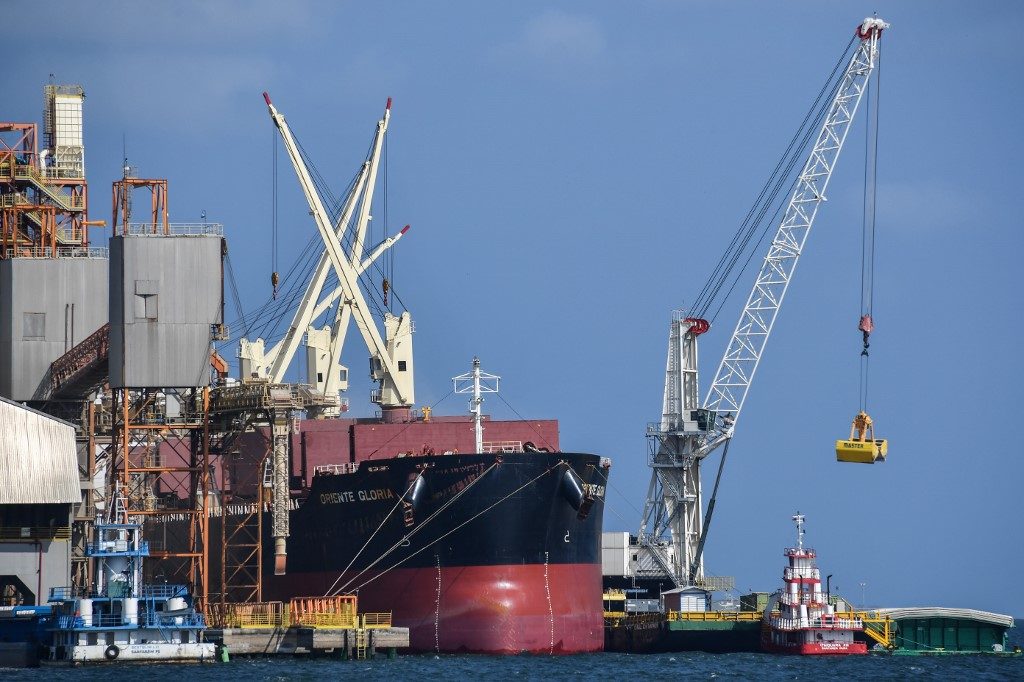Brasília – The current account deficit reached USD 2.164 billion in November, the Central Bank (BC) reported this Friday (20). The result is lower than November 2018, when it posted USD 3 billion. Year-to-date through November, the deficit reached USD 45.047 billion from USD 35.424 billion a year ago.
“Year-to-date, current account deficit was up by USD 9.6 billion, which is fully explained by the decline in the trade surplus from USD 47.1 billion [from January to November 2018] to USD 34.6 billion [year-to-date through November]. In other words, if you compare, this [declining] trade [balance] result was even more intense than the total reduction in current transactions,” said Central Bank statistics department chief Fernando Rocha.
Rocha explained that the trade balance is lower due to declining exports because of the crisis in Argentina and the reduced soy demand from the Chinese. “Year-to-date, exports dropped by 6.3%,” he said.
Trade surplus reached USD 2.777 billion in November and USD 34.648 billion year-to-date through November from USD 3.578 billion and USD 47.070 billion a year ago, respectively.
The primary income account (profits and dividends, interest and wage payments), which is also part of current transactions, ran a deficit of USD 2.916 billion in November and USD 49.290 billion year-to-date through November.
The secondary income account (income generated in one economy and distributed to another, like donations and dollar remittances with no corresponding services or goods) ran a surplus of USD 40 million in November and USD 1.180 billion year-to-date.
The services account (international travels, transport, investment rent, and others) posted a deficit of USD 2.065 billion in November and USD 31.585 billion year-to-date through last month.
For December, BC expects the current deficit to reach USD 6 billion. Rocha forecasts that the current deficit will slightly increase this year and the next. That’s because the larger economic growth expected for 2020 increases the demand for imported goods and services. Moreover, foreign companies’ subsidiaries in Brazil post better results, thus increasing remittances of profits and dividends abroad. On the other hand, Rocha added that the demand for services from Brazil and Brazil’s revenues from profits and dividends are increasing.
Travels

With the dollar on the rise, spending by Brazilians during international trips decreased in November. Last month, spending reached USD 1.247 billion from USD 1.385 billion year-on-year.
Year-to-date through November, this spending during international trips were also down. Expenditure reached USD 16.097 billion from USD 16.863 billion a year ago.
The decline was driven by the higher dollar at an average of BRL 4.16 in November. “The devaluing exchange rate makes tourists’ spending more expensive,” said Rocha.
Expenditure of foreign travelers in Brazil reached USD 432 million last month and USD 5.403 billion year-to-date through November. With these results, travel deficit stood at USD 816 million in November and USD 10.693 billion year-to-date through November.
Month-do-date through the 18th, foreign travelers’ spending in Brazil reached USD 294 million, while Brazilians’ spending abroad stood at USD 890 million generating a travel deficit of USD 596 million.
Investment

In November, current deficit was entirely made up for Foreign Direct Investment (FDI). Last month, flow reached USD 6.985 billion from USD 9.080 billion a year ago. Year-to-date through November, investment reached USD 69.111 billion from USD 69.869 billion a year ago.
BC estimates that FDI in December will be USD 11 billion. Month-to-date through the 18th , this investment reached USD 8.373 billion.
Translated by Guilherme Miranda




